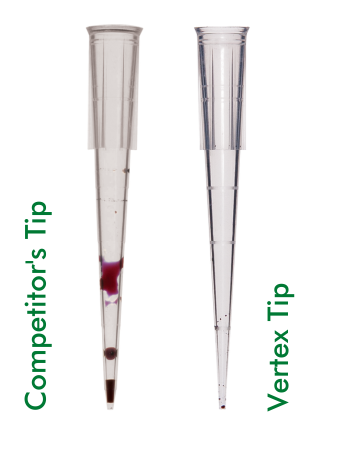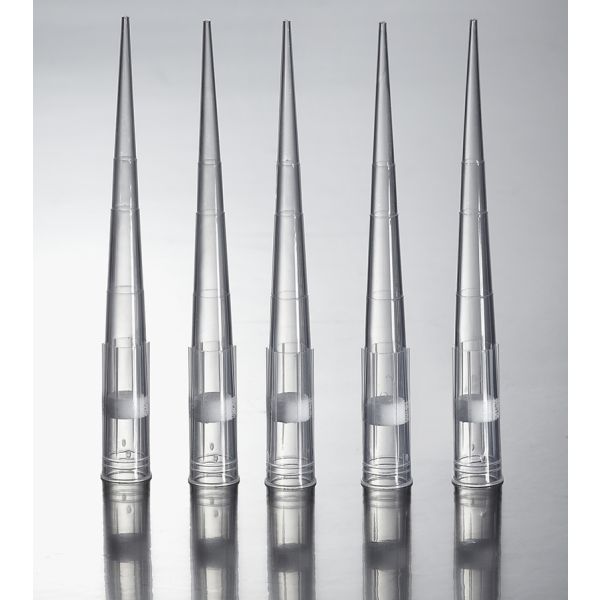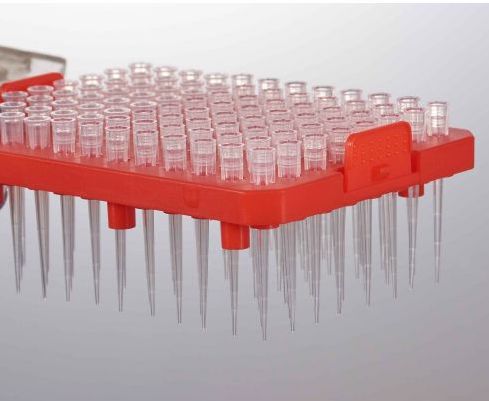Selecting the Perfect Pipette Tip: Purity Requirements, Low Retention, Aerosol Barrier Filters, Universal Fit and Packaging Considerations
Selecting the Perfect Pipette Tip: Purity Requirements, Low Retention, Aerosol Barrier Filters, Universal Fit and Packaging Considerations


Selecting the Perfect Pipette Tip: Purity Requirements, Low Retention, Aerosol Barrier Filters, Universal Fit and Packaging Considerations
Selecting the right pipette tips can be crucial for achieving accurate and efficient laboratory work. In this blog, we will delve into some of the most critical characteristics of pipette tips, including sterile and non-sterile options, low retention properties, aerosol barrier filters, universal fit tips and the advantages of different packaging formats.
1. What are the most important factors when choosing sterile vs. non-sterile pipette tips?
Choosing between sterile and non-sterile pipette tips depends on the specific requirements of your application and the level of contamination control needed. It is, however, essential to remember that not all sterile tips are created equal.
· Quality control:
Tip manufacturers regularly check the quality of their products and validate their sterilization procedures. If you need to perform sensitive assays with tips free from RNase, DNase or pyrogens, look for a manufacturer who can certify their tips meet these specifications.
· Autoclaved tips are not free from RNase and DNase:
While it is possible to autoclave tips, it's important to remember that the autoclave process does not remove RNase, DNase or pyrogens. Furthermore, if the tips you purchased come sterile and in a sealed pack, do not autoclave them. Sterile tips are already sterile by radiation; by placing them in an autoclave, you may be inadvertently introducing contaminants and compromising their sterility.


2. What are low retention tips, and how do they work?
Low-retention pipette tips reduce the amount of liquid (water, DNA, enzymes, proteins, cells, and other polar solvents) that adheres to the tip during dispensing. Low retention is achieved through the specific hydrophobic material the tips are made from, which reduces the surface tension between the pipette tip and the dispensed liquid. In the past, low retention tips were sometimes coated with a hydrophobic substance; this practice has long been abandoned as newer and better technologies were developed.
3. What are the main benefits of low retention tips?
· Improved accuracy, precision, and reproducibility:
By reducing surface tension, low retention tips help ensure the same amount of liquid is dispensed each time, reducing the risk of variability and error during liquid dispensing. The improved reproducibility and accuracy can also help your workflow by reducing the need for repeat experiments.
· Reduced sample/reagent loss:
With low retention tips, the liquid is less likely to stick to the walls of the tip or be left behind, minimizing sample/reagent loss and improving yield. Low retention tips can be highly beneficial when working with "sticky" samples with a low surface tension compared to water. Reducing the amount of wasted reagents can also help save costs and improve efficiency.
· Increased sensitivity:
Low retention tips are essential when working with small volumes of liquid, as even a tiny variation in dispensing accuracy can significantly impact the outcome of an experiment.


4. What are aerosol barrier pipette tips (filter tips), and how do they work?
Pipetting creates aerosols (tiny airborne particles that can carry biological or chemical contaminants) suspended inside the pipette tip each time you aspirate liquid. Aerosol barrier tips have a filter embedded in the tip that prevents aerosols and other small particles from passing inside the pipette and carrying over to the next liquid transfer. Using non-filtered tip risks contaminating your pipette and future samples, even if you change the tip each time.
5. Why should every lab use aerosol barrier filter tips?
· Reduced risk of cross-contamination:
This can be especially important in laboratory settings where the risk of contamination is high, such as when working with biological or chemical samples that may contain infectious agents or hazardous materials. Filter tips are also crucial for PCR applications where even the most minor quantities of DNA from a previous sample could be amplified, leading to a false positive result.
· Protect your pipette:
It is crucial to use filter pipette tips when handling dangerous or corrosive samples for both your safety and the lifetime of your pipette.
· Save costs in the long run:
While filter tips cost slightly more than their unmodified counterparts, their use is justified when considering the cost of reagents, buffers, time, and labour associated with rework due to contamination or pipette repair/replacement.
6. What are the main advantages of buying racked pipette tips (vs. bulk)?
· Convenience:
Racked pipette tips come pre-loaded in racks, making them ready to use immediately. While bulk tips are generally more economical, they require additional time and effort to load individual tips into pipette tip boxes before use manually.


· Contamination control:
Racked tips are typically sealed with a protective lid, which helps prevent contamination during storage, transportation, and handling.
· Efficiency:
Besides saving time by reducing workflow interruptions due to frequent tip reloads, racked tips are organized in a colour-coded manner to facilitate volume identification. The systemic organization of racked tips can also reduce the chances of accidental drops or contamination, leading to less wasted time, effort, and resources.
7. How do universal-fit pipette tips work, and are they truly universal?
For a pipette tip to fit a given pipette, the hub of the tip must be slightly larger than the barrel of the pipette. Universal-fit pipette tips have a soft and flexible hub that will conform to the barrel of most pipettes. Universal-fit pipette tips are designed to be compatible with a wide range of pipette models and brands, offering versatility and convenience.
It is important to note that while universal-fit tips strive to offer compatibility with a wide range of pipettes, they may not fit in all cases (this is especially true with older pipette models). Contact your territory manager to ensure proper fit and compatibility with your specific pipette model.
Conclusion:
Choosing the right pipette tip is crucial for accurate and reliable lab work. From improving accuracy, precision, and convenience to reducing sample loss and contamination, there's a tip for your specific need.
Ultident has been a leading Canadian distributor of liquid-handling pipette products for over 30 years. Please browse our selection today to find the perfect tip for your application, or speak with your territory manager to learn about our products and ongoing promotions.
References:
[1] https://www.integra-biosciences.com/canada/en/blog/article/different-types-pipette-tips
[2] https://dandiag.dk/uploads/Low-retention-tips.pdf
[3] https://www.priorclave.com/en-us/2018/09/06/top-tips-for-autoclaving-pipette-tips/
[4] https://www.labmanager.com/laboratory-technology/preventing-contamination-in-pipetting-5195
[5] https://www.labmanager.com/product-focus/the-latest-in-pipette-tip-design-4157
[6] http://www.pipettipfinder.com/Topics/What-Makes-A-Pipet-Tip-Universal.aspx





